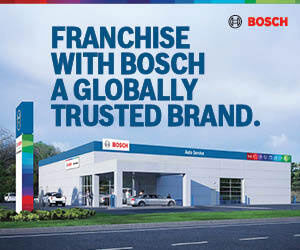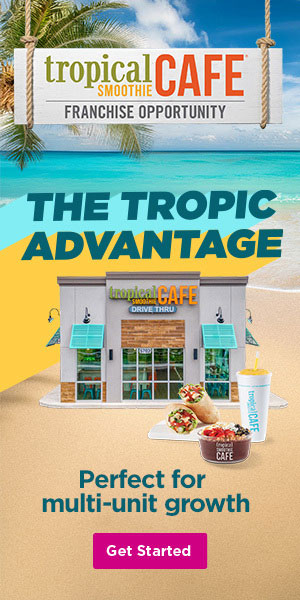Technology Can Shorten the Time to a Franchisee's First Dollar
Do you know how many days it takes from signing until your franchisees can begin collecting revenues? Do you have a system in place for ensuring that everything is being optimized to reduce that time frame, through flags, notifications, and assurance that an effective workflow is being achieved?
Getting this right can create a myriad of positive benefits, including improving profitability, capitalizing on the excitement and enthusiasm following the franchisee joining your system, guarantee a quicker start-up over your system average, and even help you sell more franchisees through improved validations!
It's really something having one of the most unique seats in the house. Being at the helm of an organization that has worked with more than 450 franchise organizations representing in excess of 50,000 franchise units, I'm given the ability to spot recurring patterns - often before they are visible to others in the franchise world - in this case, the "onboarding" of new franchisees. Very few franchisors out there today seem to be tracking the metric that is referred to as "days to first dollar." This is the time it takes from the initial signing of the franchise agreement until the franchisee is actually able to make the proverbial cash register ring.
Death by a thousand paper cuts
There are a myriad of participants in the "franchise opening process," involving a plethora of details that must be completed to warrant a successful opening and critical first-year success. Depending on the type of business, there is everything from the mundane setting up of bank accounts, ordering equipment, hiring, and training to more complex variables such as management experience, owner engagement, staff readiness, pre-open marketing, etc.
A forward-thinking former colleague introduced an onboarding step that required the collection of 1,000 names, titles, email addresses, phone numbers, and physical addresses before the franchisee could enter initial training. And this franchisor didn't permit acquisition of lists, requiring the new franchisee to visit businesses face-to-face armed with only an introduction and a pamphlet, with no other goal than to collect contacts that would go into their contact management or CRM system.
This is certainly a powerful means for ensuring that when the new franchisee can begin marketing, they will be able to hit the ground running. But the challenge was that the franchisor didn't have visibility into how effectively and timely the list was being compiled, and it was adding additional time to the onboarding process. Don't get me wrong - it's a brilliant strategy, but real diligence is needed to ensure that this critical endeavor doesn't extend time frames needlessly. With all of the moving parts, this can also become one of those "I'm too busy doing my job to do my job" moments, where tasks end up falling through the cracks.
In speaking with a franchisor at a recent conference, this officer of a major hotel chain said that it takes them nearly three years from the signing to the franchisee being able to book a room. I'm not talking about achieving ROI, I'm simply speaking to how long it takes before they can ring up their first sale.
Getting hold of franchisees who have the funds to weather even six months in working capital can be a challenge in today's market. Can any of us afford to have their new franchisees go even one day longer than is absolutely necessary? After all, it's always been a fact that the number-one reason for attrition is undercapitalization.
Breaking down the silos
Where most franchisors that turn to us have their biggest challenge is in breaking down the silos and getting each department's onboarding steps into a single, consolidated spreadsheet indicating the task, who is responsible, the time frame tied to weeks before opening, parent/child dependencies, etc. While real estate, training, field support, etc. all seem to have their acts together, unfortunately they are typically maintained on an Excel spreadsheet with limited visibility and reporting outside their own realms. Having a centralized and integrated enterprise software tool is critical. This manner of technology provides everyone - not only within the organization, but outside contractors, equipment vendors, etc. - with the ability to provide real-time status updates as to where the new franchisee is in their pre-opening and ramp-up.
The real key to shortening the total cycle time of onboarding a new franchisee is to have an end-to-end process that allows a collaborative environment for improved visibility, insight, and control across all departments. This improves alignment and maximizes your organization's resource utilization, while also providing measurements to help increase your operational efficiencies.
I know of no better way to accomplish this than through transparent, permission-based technology. Some may think this is cost-prohibitive, but the fact is that with the proper tool, you can quickly realize a return on investment in a couple of months through increased employee productivity, faster cycle times, reduced costs, and improved time management. Studies have demonstrated that with the proper software or cloud-based tool, costs can be cut 2% to 5%, productivity increased 20% to 25%, and can free up 10% to 15% of a franchisor's budget to more strategic projects. Experience has shown us that the best performers can reduce the time to the achievement of first franchisee dollar by more than 30%.
Best practices
- Standardization and centralization of data collection across the network. One critical key is to have an online report that is readily accessible by any and all individuals who have a role in a franchisee's successful opening and accountability for their first-year success. The key is that it must be in a central repository where it is consolidated to improve visibility and control.
- Readily ascertain franchise openings at risk. The key here is to standardize and automate the governance processes so you can readily search and determine any overdue tasks, whether by franchisee, region, or department. This should be accomplished through a simple reporting function that looks for variances that fall outside the minimum/maximum date ranges established for any given task.
- Ensure that you have clearly identified any "critical path" activities. By definition, this is the sequence of activities that must be completed on schedule for the entire onboarding process to be completed on time. It is the longest duration path through the work plan. If an activity on the critical path is delayed by one day, the entire franchise opening will be delayed by one day (unless another activity on the critical path can be accelerated by one day).
- Use cloud-based technology to allow for easy collaboration and coordination. This evolution over traditional software is proving to be the smoothest way to coordinate and adjust quickly to accommodating project changes, and it can readily be accessed through almost any computer, smartphone, tablet, or similar device to make the entire process more readily accessible than any time in history.
- Measure and track new franchisee opening performance. Have a post-mortem iterative process that includes your franchisees, to identify where the bottlenecks occurred and to make it easy for your franchisees to provide a 360-degree review process. This is easier said than done, as many new franchisees are afraid of the potential for reprisal, or that this can somehow earmark them as troublemakers or otherwise impede their ability to grow in the future.
Conclusion
In summary, each franchisor should know exactly what their metrics are for getting a new franchisee effectively onboarded from the day they sign the franchise agreement to getting their first dollar of revenue. This may be one of the most critical metrics for driving franchisee performance, satisfaction, ensuring compliance, creating alignment, and reducing attrition.
Keith Gerson is president of global operations for FranConnect. He has held the executive role at some of franchising's most revered brands, and brings more than 38 years of franchise experience both as franchisor and franchisee. FranConnect offers cloud-based centralized franchise management systems for the entire spectrum of the franchise lifecycle from recruitment, store openings, and online training to franchisee intranets, franchisee consumer marketing technologies, financial reporting, and dashboards. He can be reached at [email protected]. For more information, go to www.franconnect.com, www.mycaptivate.com, or www.zcubator.com.
Share this Feature
Recommended Reading:
| ADVERTISE | SPONSORED CONTENT |
FRANCHISE TOPICS
- Multi-Unit Franchising
- Get Started in Franchising
- Franchise Growth
- Franchise Operations
- Open New Units
- Franchise Leadership
- Franchise Marketing
- Technology
- Franchise Law
- Franchise Awards
- Franchise Rankings
- Franchise Trends
- Franchise Development
- Featured Franchise Stories
| ADVERTISE | SPONSORED CONTENT |








 The franchise listed above are not related to or endorsed by Franchise Update or Franchise Update Media Group. We are not engaged in, supporting, or endorsing any specific franchise, business opportunity, company or individual. No statement in this site is to be construed as a recommendation. We encourage prospective franchise buyers to perform extensive due diligence when considering a franchise opportunity.
The franchise listed above are not related to or endorsed by Franchise Update or Franchise Update Media Group. We are not engaged in, supporting, or endorsing any specific franchise, business opportunity, company or individual. No statement in this site is to be construed as a recommendation. We encourage prospective franchise buyers to perform extensive due diligence when considering a franchise opportunity.